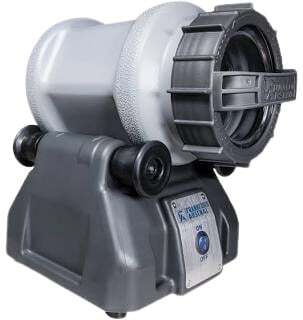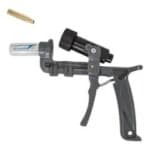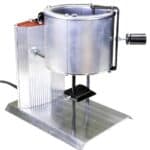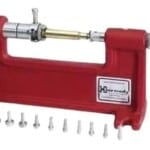
Procedures to clean brass before reloading
Cleaning brass casings is an important step in the reloading process as it helps ensure a proper, reliable, and safe performance of the ammunition. Here's a basic step-by-step guide on how to clean brass before reloading:
- Safety First: Always ensure you're working in a well-ventilated area when handling spent casings, as residues from gunpowder and primers can be harmful. Wear safety glasses and gloves for your protection.
- Deprime the Brass: First, use a depriming tool to remove the spent primers from the brass. This step is not always necessary before you clean brass, but it can help ensure the primer pockets are cleaned as well.
- Inspect the Brass: Examine each casing for any visible signs of damage like cracks, dents, or signs of over-stretching. Discard any that are damaged.
- Choose Your Cleaning Method: The two most common methods to clean brass casings are dry tumbling and wet tumbling.
- Dry Tumbling: This is the traditional method and involves using a vibratory tumbler filled with a cleaning media such as crushed corn cob or walnut shell. You put the brass in the tumbler, let it run for several hours, and the friction with the media polishes the brass.
- Wet Tumbling: This method uses water, a mild cleaning solution (like dish soap or a specialized brass cleaning solution), and small stainless steel pins in a rotary tumbler. The brass comes out looking almost new after a few hours. It's a bit more work because you then have to dry the brass, but it does a very thorough job.
- Clean Brass: Place your brass in the tumbler (either dry or wet), then turn it on. The tumbling action will agitate the casings, allowing the cleaning media or solution to remove the dirt and residue.
- Inspect and Dry the Brass (for Wet Tumbling): Once the brass is clean, inspect it again for any leftover dirt or residue. If you used the wet tumbling method, you need to thoroughly dry the casings to prevent corrosion. This can be done by spreading them out on a towel and letting them air dry, or putting them in a low oven or dedicated brass dryer.
- Final Inspection: Before proceeding with the reloading process, give your brass one last inspection. Check the primer pocket, inside of the casing, and the general integrity of the brass.
Please note that this is just a basic overview. The specific details can vary based on the equipment you have available, and the type and condition of the brass you're cleaning. Always follow the manufacturer's instructions for any cleaning equipment or products you're using.
Brass cleaning tools can be found here.
If you know of any forums or sites that should be referenced on this listing, please let us know here.




